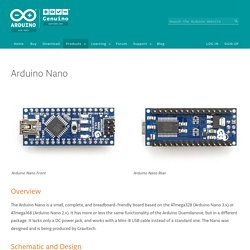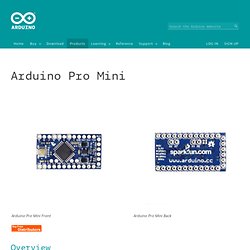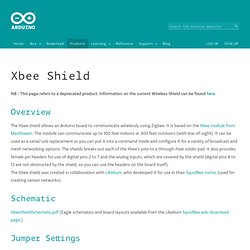

RFM70D - 2.4 GHz Data Transceiver Module. Radio Control Modules - 433MHz. Radio Data Transceiver Module - HM-TR Datasheet. ATMega Controller. Our new very powerful ATMega Controller is now available.

This controller includes the high performance, fast throughput, and a huge 128k of flash program memory Atmel ATMega128 Microcontroller. Ideal for the most complex of tasks, this unit is loaded with a massive amount of I/O points making the controller perfect as a main board for large embedded applications. The board includes in-circuit program download for easy updates and program changes. This can be done with the controller in place, or on-site. The programmer, the ET-AVR ISP is available separately. The ATMega Controller is based on the new ATMega128 microcontroller from Atmel® . If your looking for a new powerful main controller for complex applications our new ATMega Controller is ideal. Part Code: ATMEGACONT128 Features Programmer In-Circuit Programmer for above ATMega Controller Go To ET-AVR ISP | Main Page | Technical Data | Accessories | Tips and Tricks | Funktion.
Yaler - access small devices from the Web. Ultralab. DIY / Physical computing / Electonics. Arduino. ArduinoBoardNano. Overview The Arduino Nano is a small, complete, and breadboard-friendly board based on the ATmega328 (Arduino Nano 3.x) or ATmega168 (Arduino Nano 2.x).

It has more or less the same functionality of the Arduino Duemilanove, but in a different package. It lacks only a DC power jack, and works with a Mini-B USB cable instead of a standard one. The Nano was designed and is being produced by Gravitech. Schematic and Design Arduino Nano 3.0 (ATmega328): schematic, Eagle files. Arduino Nano 2.3 (ATmega168): manual (pdf), Eagle files. Specifications: Power: The Arduino Nano can be powered via the Mini-B USB connection, 6-20V unregulated external power supply (pin 30), or 5V regulated external power supply (pin 27). Memory The ATmega168 has 16 KB of flash memory for storing code (of which 2 KB is used for the bootloader); the ATmega328 has 32 KB, (also with 2 KB used for the bootloader).
Input and Output Serial: 0 (RX) and 1 (TX). I2C: A4 (SDA) and A5 (SCL). AREF. Communication Programming. ArduinoBoardProMini. Overview The Arduino Pro Mini is a microcontroller board based on the ATmega168 (datasheet).

It has 14 digital input/output pins (of which 6 can be used as PWM outputs), 8 analog inputs, an on-board resonator, a reset button, and holes for mounting pin headers. A six pin header can be connected to an FTDI cable or Sparkfun breakout board to provide USB power and communication to the board. The Arduino Pro Mini is intended for semi-permanent installation in objects or exhibitions. The board comes without pre-mounted headers, allowing the use of various types of connectors or direct soldering of wires. There are two version of the Pro Mini. The Arduino Pro Mini was designed and manufactured by SparkFun Electronics. Schematic & Reference Design.
T_TSC_SOABasedInternetofThings.pdf (application/pdf-Objekt) Arduino. Cooking Hacks - Tasty Electronics for the Arduino Community. ArduinoXbeeShield. NB : This page refers to a deprecated product.

Information on the current Wireless Shield can be found here Overview The Xbee shield allows an Arduino board to communicate wirelessly using Zigbee. It is based on the Xbee module from MaxStream. The module can communicate up to 100 feet indoors or 300 feet outdoors (with line-of-sight). The Xbee shield was created in collaboration with Libelium, who developed it for use in their SquidBee motes (used for creating sensor networks). Schematic XbeeShieldSchematic.pdf (Eagle schematics and board layouts available from the Libelium SquidBee wiki download page.) Jumper Settings The Xbee shield has two jumpers (the small removable plastic sleeves that each fit onto two of the three pins labelled Xbee/USB). With the jumpers in the Xbee position (i.e. on the two pins towards the interior of the board), the DOUT pin of the Xbee module is connected to the RX pin of the microcontroller; and DIN is connected to TX. Networking Addressing Configuration.
TinkerSoup. TinkerSoup. TinkerSoup. The Contiki Operating System - Home. News. Configuring Xbees.